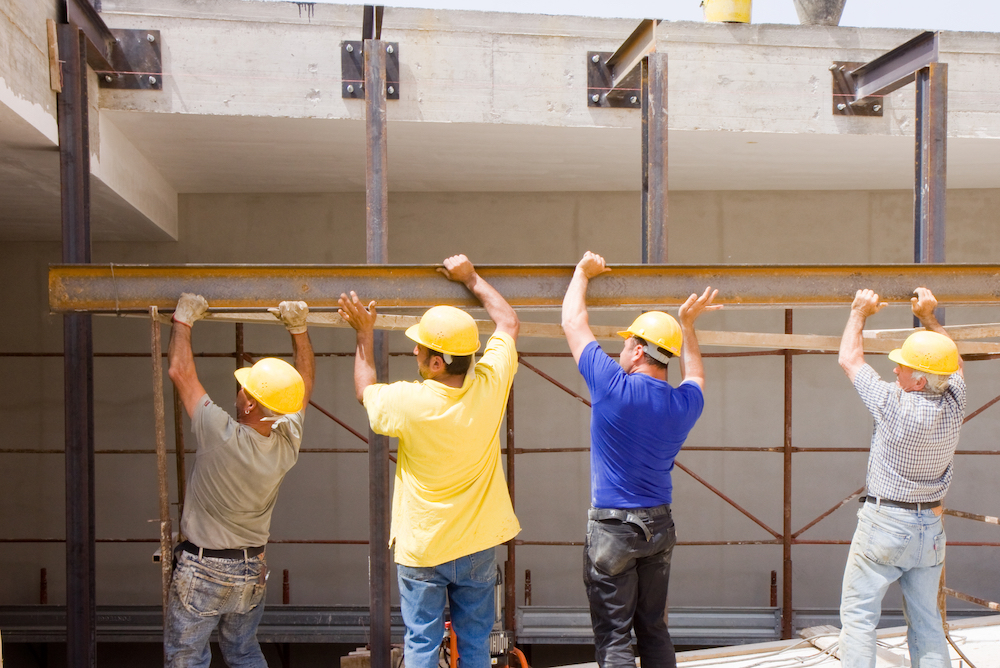
No matter how hard contractors try to avoid this situation, the reality is, construction payments are slow. According to the 2019 National Construction Payments Report, about half of all U.S. contractors do not get paid on time. That’s a hard pill to swallow in an increasingly digital world where transactions are instant and convenience is everything. Improving transparency on construction sites eases communication, boosts productivity, and reduces the time it takes for payment to come through.
Imagine you’re the subcontractor on a huge project and having trouble getting payment from the GC. You’ve sent a bunch of emails and left a dozen voicemails but you’re yet to hear anything back. You’ve put in 10-hour workdays for the past two weeks but you have nothing to show for it. You’re burned out, fed up, and want to know when the next payment is coming in.
Sadly, this is an all too familiar situation for contractors who find themselves chasing down payments at the end of construction projects.
Construction Payments: Slow, Hard, and Stressful
Despite the rise of technology and sophisticated structures, construction remains one of the least digitized industries in the world. Getting paid in construction is already slow, hard, and stressful. The lack of communication technology can make it even worse.
Instead of receiving payment upon project completion, contractors have to chase down their money. They spend a lot of time making phone calls, sending emails, and invoicing clients (and sending invoice reminders) just to trigger a response. This waste of time and energy can prevent contractors from taking on more business, and, in some cases, even making payroll.
So, how can contractors speed up the payment process to avoid significant loss and stress? The answer lies in transparency.
The Benefits of Transparency in Construction
The construction payments report also found that, for 45% of construction companies, lack of visibility across projects is a top challenge. Without adequate transparency, projects suffer and payments get delayed. More importantly, contractors begin to lose trust in clients if they feel they’re being left in the dark.
To improve transparency and prevent important requests from slipping through the cracks, contractors should invest in processes and/or technology that allows for the real-time flow of information between one parties on the job site. This way, everyone — from the office manager at a 12 person subcontracting firm to the CFO at a global general contractor — stays on the same page.
Without transparent software and processes, parties up the payment chain might not even know who the contractor on a job is, let alone that their payments are being held up. That is why visibility documents are also important.
Transparency for Visibility
Sharing visibility documents like preliminary notices with the owner and GC is an effective way of communicating that you’re working on a project. The information contained in these types of notices is so useful that in many states, subs, suppliers, and even GCs are required to send preliminary notices at project kick-off.
Sharing this information helps lien waivers and payments flow smoothly. It ensures that contractors don’t run into problems towards the end of a project when deadlines are tight and tensions are high.
With projects becoming more complex and schedules running tighter, the need for fast and transparent processes has never been greater. Having the ability to quickly capture and catalog information not only speeds up the payment process but helps owners deal with a variety of issues — e.g., challenges around compliance and consistency — should they arise.
Transparency for Compliance and Consistency
According to a survey of 3,000 builders, early 50 percent of contractors still manually prepare and process reports. Manual document preparation can make it difficult for workers to stay compliant and consistent on projects. Collecting physical copies of requirements or regulations often leads to a loss of information and communication delay — not to mention the fact that paper documents rarely get updated.
In the event that compliance issues arise, owners need instant access to the right information in order to respond quickly and confidently. If information lives among various files and spreadsheets, it takes contractors much longer to put out fires.
Transparency for Productivity
Transparency is the key to seamless communication. In today’s time-crunched construction environment, sharing information quickly and efficiently among project team members has never been more crucial. In the field, that’s often the difference between a good construction crew and a great one.
Without transparency, contractors will spend up to 70 percent of their day idling. They waste time waiting for information and directions that haven’t been clearly communicated. Companies like Fieldwire create platforms that help to avoid these types of scenarios. Smartphones can make it easy to record and share the information that serves as the lifeblood of their business. Open, transparent communication keeps projects on schedule and under budget.
The High Cost of Low Transparency in Construction
When contractors, owners, suppliers, etc. use the same communication processes for a project, it has a better chance of running smoothly. Waste, budgets, and schedules tend to increase when people on the same job site use different technology to communicate. And the cost of this is far worse than most contractors think.
Up to four hours are lost to rework activities incurred from poor communication each week, and 90 minutes per person per day is wasted ‘looking for stuff.’ This annualizes to about 18,000 hours spent searching for information that is easily accessible when everyone is united on the same platform.
The construction industry has suffered from low transparency and slow payments for decades. But thanks to construction technology firms like Fieldwire and Levelset, that’s already starting to change. Even the most traditional contracting firms are moving away from disconnected, paperless processes. Instead, they’re turning to software that improves transparency throughout all stages of a construction project. It’s time to embrace technology to get paid on time, deliver projects under budget, and streamline construction processes from planning to payments.

